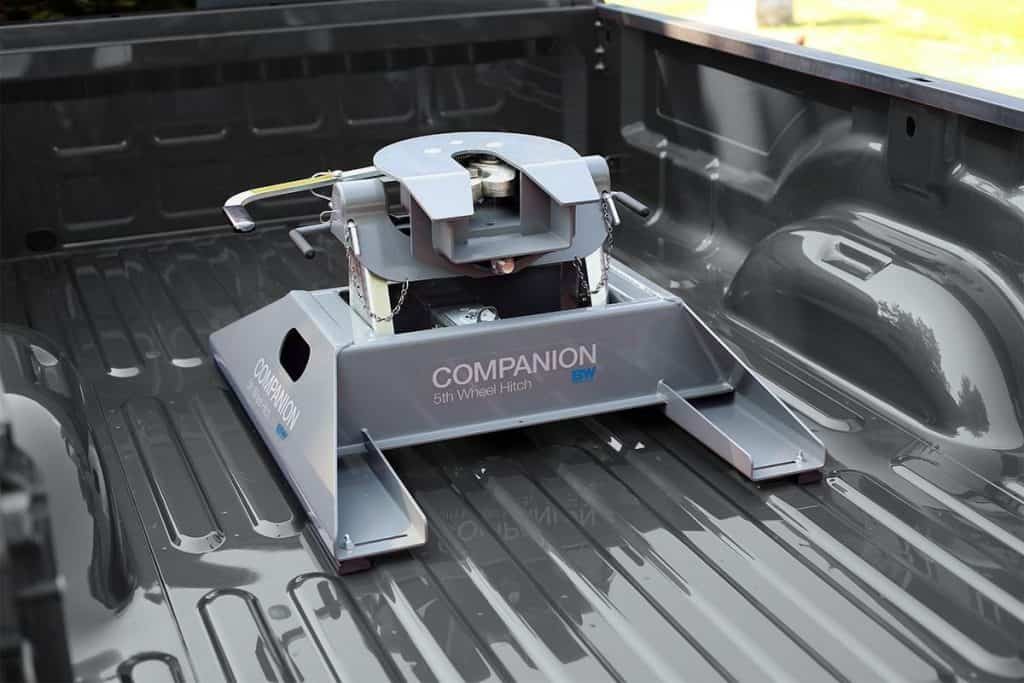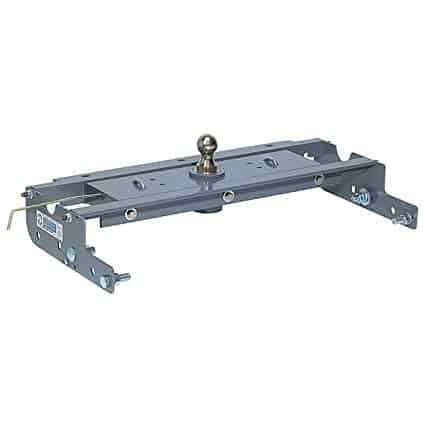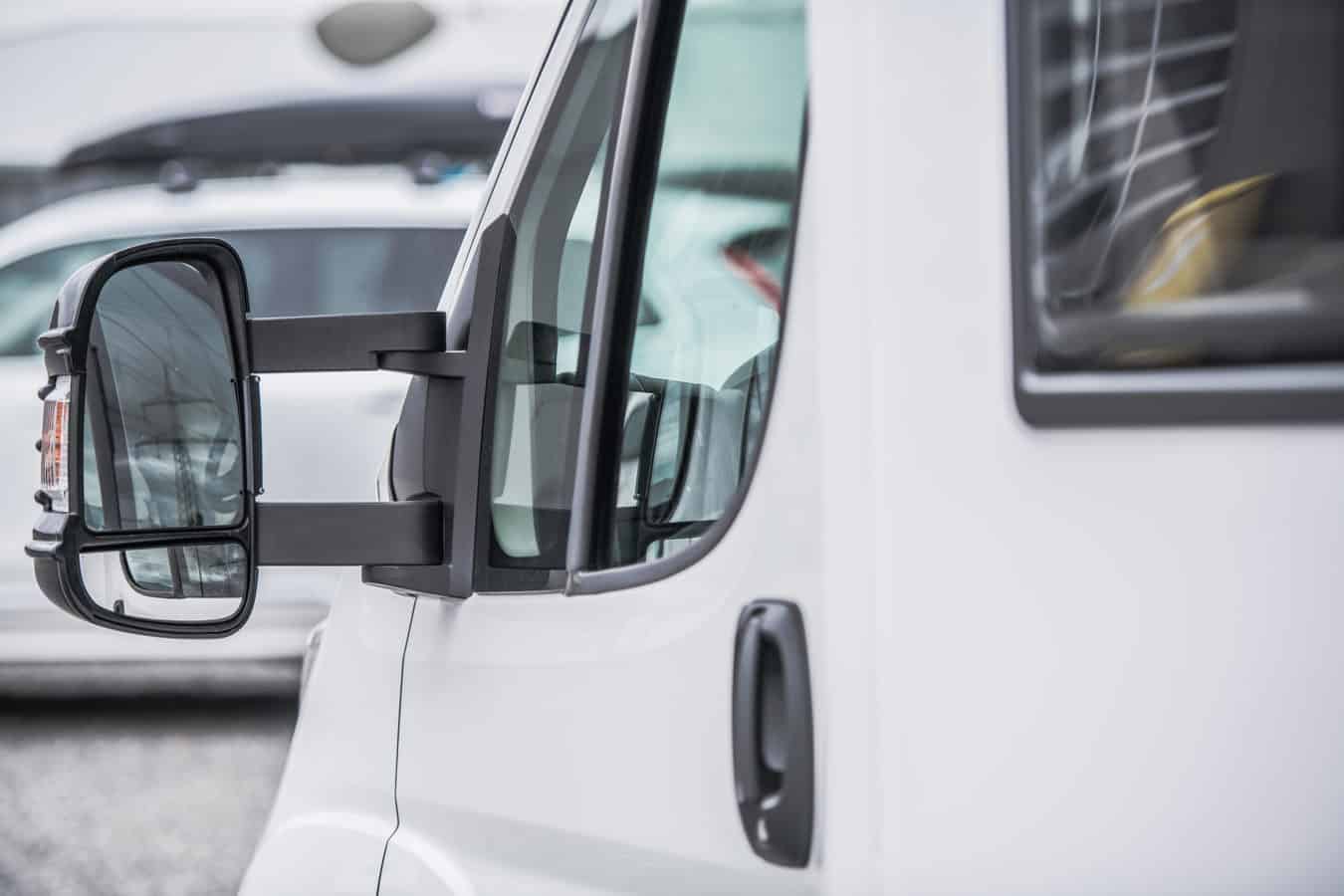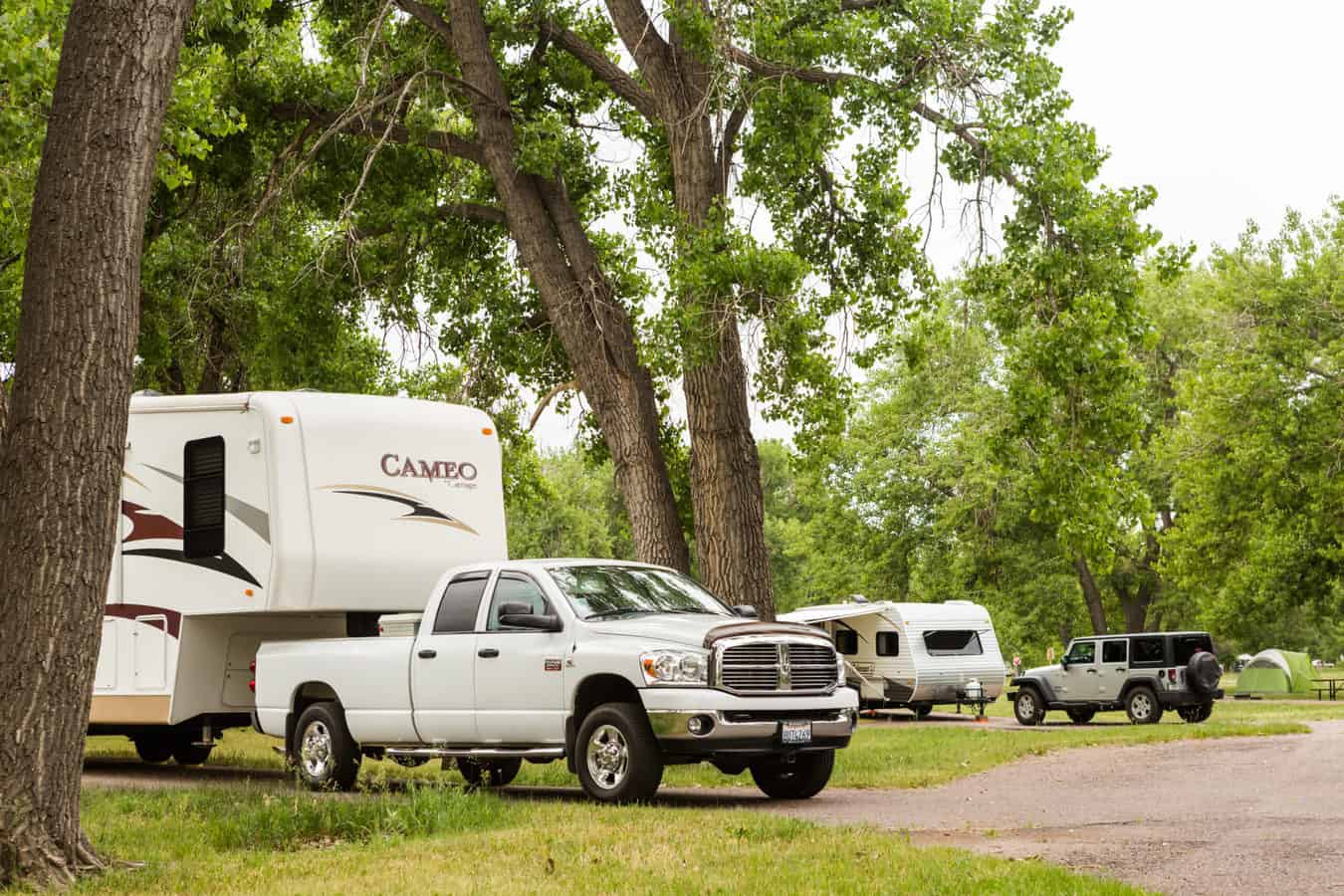
When you want to pull a fifth wheel, trailer, or any other equipment behind a car, the hitch you choose is very important. Different hitches are built for different purposes, but some of them are more versatile than others. Two of the most common and popular hitches are the fifth wheel hitch and the gooseneck hitch. These different hitches are the main thing that sets fifth wheels and gooseneck trailers apart from each other.
Gooseneck hitches are ball hitches that are installed within the bed of a truck. These are usually used to pull industrial and horse trailers. Fifth wheel hitches are larger hitches with hinged plates that sit in the bed of their tow truck. These hitches are only compatible with fifth wheels and cannot be used for other trailers.
While fifth wheel hitches can only be used to tow fifth wheels, goosenecks are bit more… loosey goosey. They’re usually used for more manual, heavy-duty towing, but they can also connect to a wider variety of attachments. We’ll look further into the similarities and differences of these two hitches below.
Let’s find the hitch that will work out best for you and your needs!
Similarities Between Fifth Wheel Hitches and Goosenecks

Although they’re often used for different purposes, fifth wheel hitches and gooseneck hitches share a set of similar characteristics.
For instance, fifth wheel hitches and gooseneck hitches both need to be physically installed into the frame of a truck. They both have permanent structures that must be embedded into the truck. These pieces cannot be removed with every use, which can be good or bad.
In addition, both fifth wheel hitches and gooseneck hitches can only be installed in trucks. No other vehicle can or should be fitted with either of these attachments. The large, flat, stable surface of a truck bed is absolutely essential to their proper function.
They also must both sit above the main axle of the truck to get the strongest foundation possible. This is the strongest and most stable part of a truck, so they’re both installed in about the same location.
These hitches are also both easy to connect to. They sit firmly in the truck bed and simply need to be backed into place beneath the corresponding trailer. There’s no big installation process of extra equipment that needs to go into every connection.
And finally, both fifth wheel hitches and gooseneck hitches are capable of making tight turns with the vehicles they tow. With many towing attachments, it can be a real challenge for the tow vehicle to make turns and back up.
But due to the swiveling functions of the fifth wheel hitch and the smooth sliding of the gooseneck’s ball hitch, this whole ordeal becomes much easier.
Both of these hitches can come in handy for the person who wants to tow a large amount of weight in the easiest way possible. But they each have their own pros and cons as well, which may influence your decision when choosing the best one for your needs.
Read on for a breakdown of what makes fifth wheel hitches and gooseneck hitches different from each other.
Pros and Cons of Fifth Wheel Hitches
Pros:
- Different weight classes available, ranging from 15,000 to 26,000 lbs.
- Multiple locks and safety mechanisms built in
- Smooth ride, with optional additions to minimize road shock
- Often come included with the purchase of a fifth wheel
Cons:
- Hitches are difficult to remove from the truck bed
- These can only be used to connect to fifth wheels
Fifth wheel hitches are perfectly suited to their main purpose, which is pulling a fifth wheel trailer! A gooseneck hitch can be used for the same purpose, but the fifth wheel hitch is literally made for the job. It’s right there in the name after all.
So, if the only reason you need a hitch installed in your truck is to pull a fifth wheel, I’d recommend just sticking with a fifth wheel hitch. But if you want to pull a variety of different vehicles and trailers behind the same truck, you may want to look into the gooseneck hitch instead.
Pros and Cons of Gooseneck Hitches
Pros:
- They are small and unobtrusive additions
- Some models can be flipped over or removed to create a smooth truck bed
- Capable of hauling 30,000 lbs.
- Can be used with most attachments that can connect to a ball hitch
Cons:
- These hitches are less common and need to be custom installed
- Can’t attach to other types of non-ball hitches without an adapter
Gooseneck hitches are the best option if you’re looking to tow a variety of different heavy attachments. They can handle a lot of weight and are easier to switch between the different types of trailers you’d like to tow.
But they still have limits, and often need adapters to connect to different specialized hookups.
Installing a Gooseneck Hitch
Gooseneck hitches are interesting pieces of equipment. Although they require a fair amount of separate parts and interlocking pieces, the majority of the hitch is invisible once it’s properly installed.
The ball hitch (and sometimes the tops of the safety chain loops) should be the only thing visible from the bed of the truck. The hitch plate is embedded directly into the structure of the truck, which keeps the bed of the truck clear and open for storage when it’s not towing anything.
All gooseneck hitches are similar in this manner, but there are two different types that may affect your decision. One is the permanent gooseneck hitch, which will always have the small ball hitch sticking out of the truck bed.
In this case, the ball is firmly attached to the plate itself and cannot be removed or stowed away. It still doesn’t take up much space, but it will always be sticking up at least a little bit. These are generally pretty cheap and can be ordered online or from a local dealer.
To see an example of one of these permanent gooseneck hitches, you can check out this product example from Amazon.
The removable gooseneck hitch, or turnover ball, frees up space in your truck bed even more. When this hitch is not in use, you can simply pull the ball hitch out of the indent, flip it over, and store it face-down in the same opening. This will create a flat, even surface for your truck bed when it’s not towing anything.
These removable ball hitches cost more than their counterparts. They’re more convenient once installed, but they do cost more money to get to that point.
To see an example of one of these turnover ball gooseneck hitches, you can check out this product example from Amazon.
These two different types are quite similar to each other. Their installation process is pretty much the same too, so I’ll just describe it in one joint explanation.
When you need to install a gooseneck hitch, it’s often best to let the professionals do it. They have more experience and skill, plus the specific tools for the job. But if you feel confident in your own abilities and the contents of your home garage, you can install these yourself.
Installation specifics will vary from one truck to another, but generally speaking, you always want to start by removing your spare tire and lowering your exhaust pipes to create more elbow room.
You next need to remove a section of the exhaust heat shield to create room for the hitch base. Cut and remove the panel from the rear cross member to the front cross member near the front of the truck bed.
Next, you need to make a mark for the ball itself in the bed of the truck. Measure between the two wheel wells in the truck bed. Make sure that you place a clear mark in between the two. Then measure from the edge of the truck bed (not the edge of the tailgate) back to your center mark.
You can then begin drilling holes where you marked. Use a drill to make the initial hole, then a hole saw to make the full sized incision.
To prevent rust and damage in the future, line the edges of all holes with black spray paint.
Next, carve out small notches in the frame above the wheels underneath the truck. These should be cut and measured according to the specific instructions included with your individual gooseneck hitch and truck type.
Next, slide your front, angled rail into alignment with the two notches you created. Once it’s clear of the notches, slide it toward the front of the truck. Next, grab the solid block that forms the back rail. It should have openings throughout it to insert screws.
Place it so that the row of holes is closest to the ground, not the top of the truck. Move it toward the back of the truck once it’s properly situated.
Now, position the base plate underneath the truck, between the two sets of rails. Make sure that the handle is facing the driver’s side. Now use the provided screws, washers, and nuts to attach the base plate to the rails.
Assemble your frame plates outside of the truck, making sure to attach all the screws only loosely. You’ll want some give for the adjustment process later.
Now align your frame plates inside the wheel wells, between the two sets of rails. Screw them into place. Be sure to secure each side with a U-bolt as well. Tighten all screws in the frame.
Punch matching holes in the base plate and truck bed to secure the safety chain loops. Drop your safety chains loops into these holes. Install springs on the bottom of these loops.
Replace any equipment or vehicle pieces you may have removed for the installation, and you’re good to go!
For a more comprehensive guide of installing a gooseneck hitch, you can check out this video guide.
Installing a Fifth Wheel Hitch
Fifth wheel hitches generally come with the fifth wheels that you purchase. They’ll be suited to the specific needs of each type. You can pay a professional to install these or do it yourself if you have the necessary equipment, tools, and expertise.
Fifth wheel hitches need to be properly installed in a truck bed to prevent damage to the tow vehicle or the fifth wheel itself. The first thing that must be embedded into the truck bed is two long metal rods, which form the base of the hitch.
These run parallel to the long sides of the truck bed. Their midpoints should usually rest above the main axle. This is the strongest part of the truck, and so it can support the greatest amount of weight.
These will remain in place, even if the rest of the hitch is taken out. You should bear in mind that once you install a fifth wheel hitch, you’re going to have remnants of it in your truck forever after that. Just make sure you’re ready for the commitment!
These rods are usually then drilled into the truck bed through the various holes that are dotted along their length. The rods are then further secured in place with sets of specialized screws, washers, spacers, and brackets. This support system from both inside and outside the bed is vital.
Its main purpose is to keep the sheet of thin metal beneath the truck bed from crumpling under the weight and strain of hauling a heavy fifth wheel.
Fifth wheel hitches need to be installed properly to make sure that all your equipment, as well as your truck and fellow drivers on the road, stay safe. It’s usually best to get it installed by a professional due to the individual challenges and specifications of each individual truck. Fuel lines, internal wiring, and construction quirks all vary from one truck to the next.
But if you’re confident in your mechanic abilities and have all the proper equipment, it’s possible to install a hitch yourself.
If you’d like more information on installing fifth wheel hitches, this video gives an excellent guide of how to do it properly, as well as an explanation for why everything it set up the way that it is.
Gooseneck to Fifth Wheel Adapters
If you just can’t choose between these two great hitches, there’s an option for you to enjoy the best of both worlds!
Usually fifth wheels can only attack to fifth wheel hitches. But if you have a gooseneck hitch, you can purchase a fifth wheel adapter that will enable you to connect it to a fifth wheel.
A variety of these adapters are available on the market. This one is a popular product found on Amazon, but you’ll always want to make sure that you choose adapters that will attach to your specific size and model of a gooseneck hitch.
This might sound like the perfect solution, but you still need to be careful if you choose this option. Not every adapter will work forever and they have more potential to break and falter than their original products. They also place more strain on the gooseneck hitch than may have been intended.
But the decision is up to you in the end! If you’ve already got a gooseneck hitch installed in your truck and are looking at buying a fifth wheel, this could be a great option for you. Just make sure that you always follow the weight limits and safety restrictions for your truck, trailers, and hitch.



